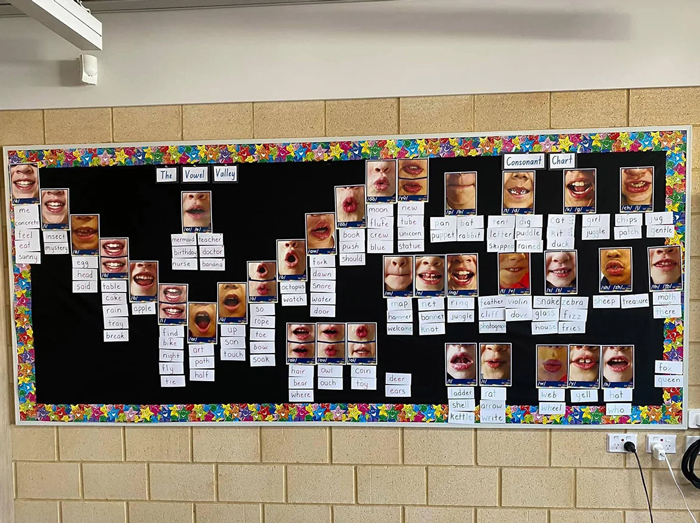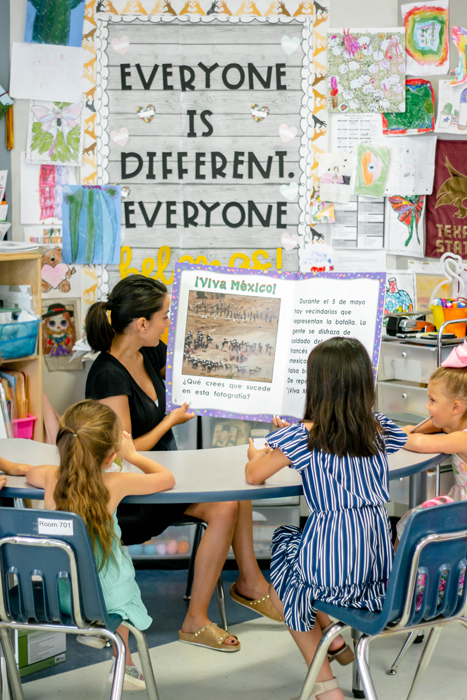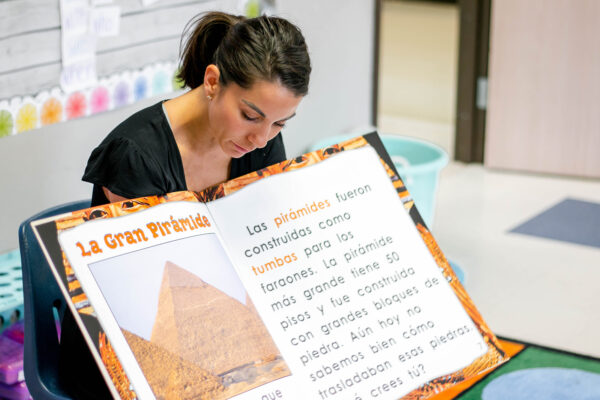Between word walls and sound walls, teachers aim to help students familiarize themselves with high frequency words and their properties. However, newer research indicates that sound walls are more useful when it comes to phonemes and spelling words through listening, something that word walls do not accomplish.
A good sound wall has a few key components. Firstly, they are conceptualized as a tool for speech-to-print, meaning that they are organized by sound, and not by letter identification. This is especially useful in an English learner classroom because language acquisition is taking place orally. So, when students are listening for familiar sounds and phrases, having phonetic representations on a spot on the wall, alongside the oral pronunciation of them using photographs (graphemes), they can investigate and make sense of the sounds they are hearing.
This is in step with new findings regarding the science of reading. Research now indicates that readers best learn the basics through phonics, phonetic awareness, fluency, and reading comprehension, not as efficiently as through high frequency word memory.
In this way, letter sounds, connected with other letter sounds, can then be decoded and students can sound out words more independently and accurately.

Setting up a Sound Wall
Sound Walls are typically organized into two parts: vowels and consonants. Jeanne Sager, a writer for Teachstarter.com has a good list to consider when setting up a sound wall:
- Explicitly introduce each of the sounds as you usually would in your classroom.
- Model the way you make the sound with your mouth.
- Have each student use a mini mirror to see what their lips, teeth, and tongue are doing when they make the sound.
- Discuss as a class what they notice when they are making that particular sound.
- Display a word for each spelling pattern seen for this specific sound (if students are ready for this).
Using Familiar Material With Sound Walls
As the days go by in the classroom, sound walls can have many additions. When learning from different materials, certain words can be added on. For example, when exploring vocabulary and developing fluency through shared reading, a teacher can add a memorable word onto the sound wall.

All Big Books, By George books come with Teacher Editions breaking down the phonemes used on each page, allowing for a simple transition to a sound wall. Small, simple steps like this aid greatly into the larger goal of fluency.




